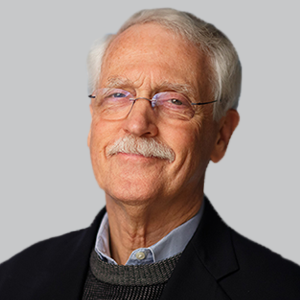Phase 2 Data Suggests Safety of NurOwn Treatment in ALS
The mesenchymal stem cell-neurotrophic factor cells met the primary safety end point and displayed early but promising signs of efficacy, prompting excitement among investigators for moving forward with phase 3 study.
Robert Brown, DPhil, Leo P. and Theresa M. LaChance Chair in Medical Research, and chair, department of neurology, University of Massachusetts Medical School and UMass Memorial Medical Center

Robert Brown, DPhil
Newly published phase 2 study findings suggest that treatment with single-dose transplantation of mesenchymal stem cell-neurotrophic factor (MSC-NTF) cells (NurOwn, BrainStorm Cell) is safe, opening a path forward to continue study to a multidose randomized clinical trial in amyotrophic lateral sclerosis (ALS).1
The autologous bone marrow-derived MSCs, which are induced to secrete NTFs and delivered intrathecally during transplantation, also displayed early but promising signs of efficacy, according to the investigators. Led by Robert Brown, DPhil, Leo P. and Theresa M. LaChance Chair in Medical Research, and chair, department of neurology, University of Massachusetts Medical School and UMass Memorial Medical Center, the investigators observed Revised ALS Functional Rating Scale (ALSFRS-R) slope improvements compared to placebo.
“The entire investigative team working on the study are highly encouraged by the promising clinical results,” Brown said in a statement.2 “In addition, we observed a clear biological effect of the treatment on CSF biomarkers to support its proposed mechanism of action in ALS.”
In total, the study included 48 participants who were randomized 3:1 to NurOwn and placebo. After 3 months of a pretransplant phase, they received a single dose of either the therapy (n = 36) or placebo (n = 12) and followed for 6 months. Cerebrospinal fluid (CSF) was collected prior to, and 2 weeks post-, administration.
The study met its primary safety end point. Over its course, 11 participants—25% in the treatment group (n = 9) and 17% in the placebo group (n = 2)—developed 16 serious adverse events (AEs), 2 of which after trial entry, but prior to treatment. Every treatment-emergent serious AEs were deemed to be related to ALS disease progression, and none were deemed related to study treatment.
Brown and colleagues noted that the Data Safety Monitoring Board “did not identify any AEs, laboratory abnormalities (blood hematology, chemistries, urinalysis), or substantial protocol deviations that would be a cause for concern.”
In an accompanying editorial, Saud A. Sadiq, MD, and Christen Shoesmith, MD, FRCPC, commended the trial’s design, noting that it “should serve as framework for other investigators to emulate.” Additionally, they wrote that this may provide hope that this, along with the other ongoing trials of MSC-derived treatments in ALS, stroke, and multiple sclerosis, will help to build a scientific basis for these therapies in neurologic disorders.
“This was a high-quality phase 2 study that identified dosing, safety, and an important efficacy signal,” coauthor Merit E. Cudkowicz, MD, Julieanne Dorn Professor of Neurology, Harvard Medical School, director, Healey Center for ALS, and chair of neurology, Mass General Hospital, said in a statement. “These data are exactly what is needed to move forward with the current phase 3 testing.”
Efficacy end points were also assessed secondarily, and the rate of disease progression, as measured by ALSFRS-R slope change, was similar in those who were treated and those who received placebo. The change in the ALSFRS-R slope posttransplant was +1.7 points/month for the NurOwn group and −0.4 points/month for placebo at 2 weeks (P = .110), and +0.6 points/month and −0.03 points/month, respectively, at 4 weeks (P = .368).
In a prespecified rapid progressor subgroup consisting of 21 patients, the rate of disease progression improved at early time points (P <.05). Additionally, responder analysis showed that a higher proportion of those treated improved on ALSFRS-R by ≥1.5 points per month compared to placebo. This was significant for the rapid progressor subgroup at Weeks 4 (P = .004) and 12 (P = .046).
CSF-NTF also increased while CSF inflammatory biomarkers decreased post-transplantation in those participants who were treated with NurOwn (P <.05), and CSF monocyte chemoattractant protein-1 levels correlated with ALSFRS-R slope improvement up to 24 weeks (P <.05).
“These promising results encourage us to complete the pivotal phase 3 trial as rapidly as possible,” said Anthony Windebank, MD, Judith and Jean Pape Adams Foundation Professor of Neuroscience, Mayo Clinic, in a statement. Cudkowicz spoke with NeurologyLive about that phase 3 trial (NCT03280056) in 2018, at which time she expressed her excitement about the possible findings.
REFERENCES
1. Berry JD, Cudkowicz ME, Windebank AJ, et al. NurOwn, phase 2, randomized, clinical trial in patients with ALS: Safety, clinical, and biomarker results. Neurology. Published online November 18, 2019, doi: 10.1212/WNL.0000000000008620.
2. BrainStorm publishes NurOwn ALS Phase 2 randomized clinical trial results in Neurology [press release]. New York, NY: BrainStorm Cell Therapeutics; Published November 20, 2019. ir.brainstorm-cell.com/news-releases/news-release-details/brainstorm-cell-therapeutics-announces-publication-nurownr-als. Accessed November 21, 2019.
3. Sadiq SA, Shoesmith C. Stem cells in amyotrophic lateral sclerosis: Hype or hope? Neurology. Published online November 18, 2019. doi:10.1212/WNL.0000000000008613.